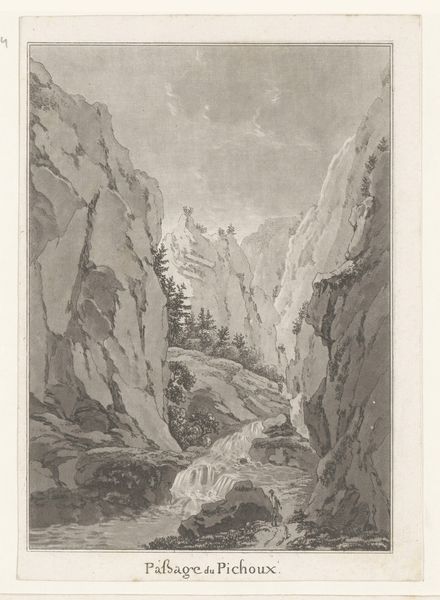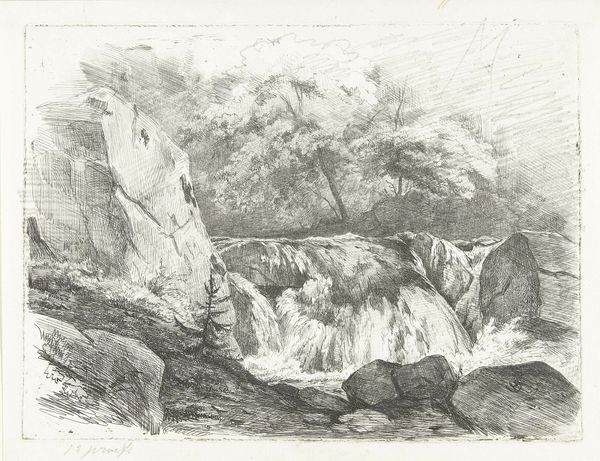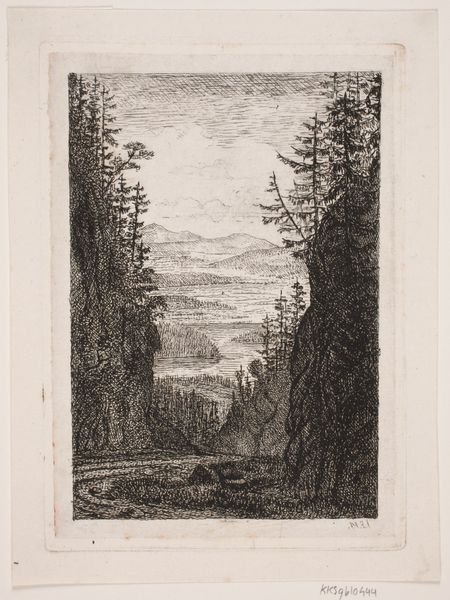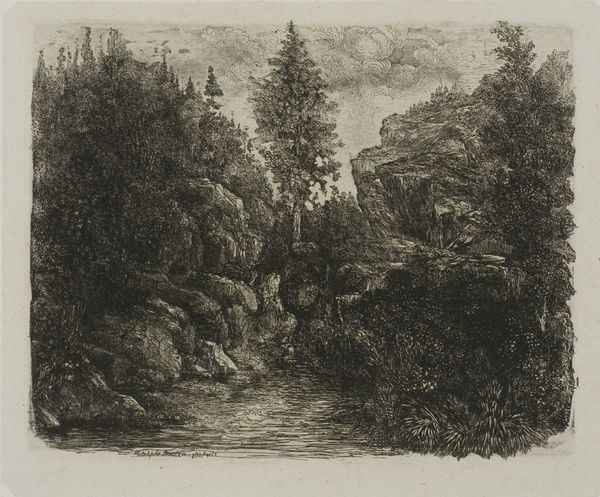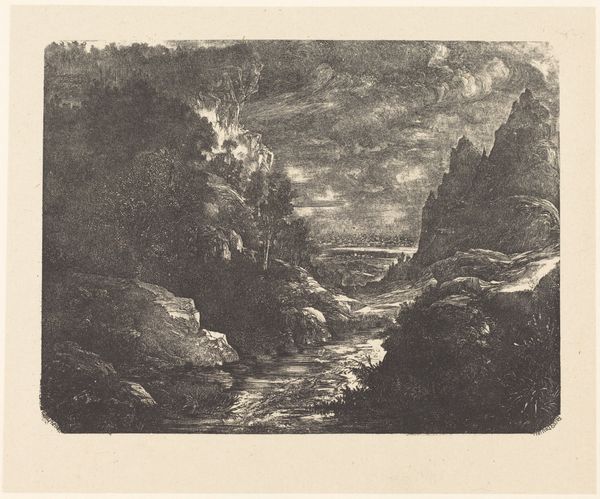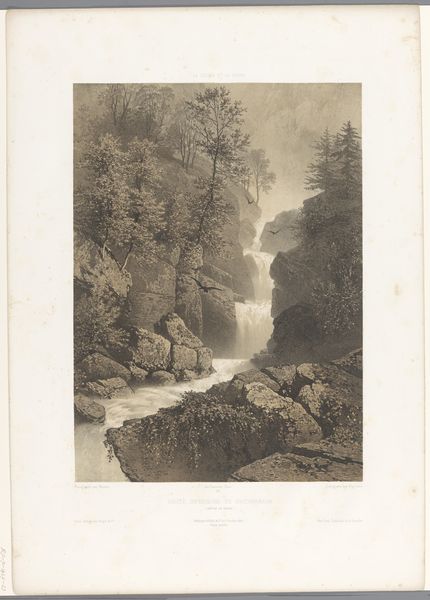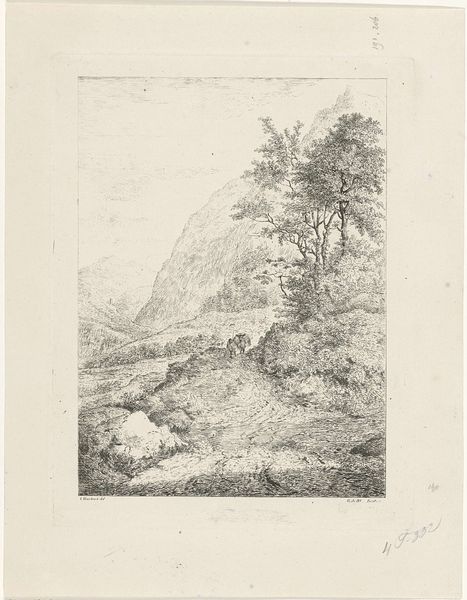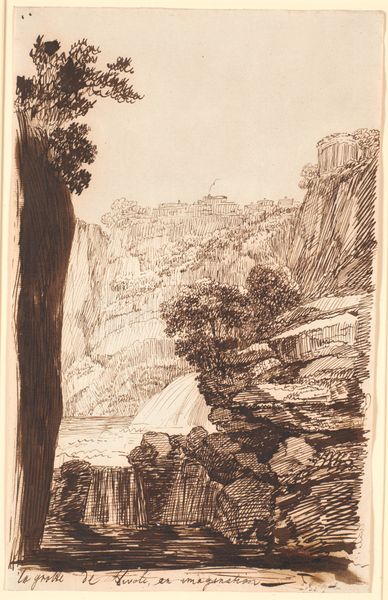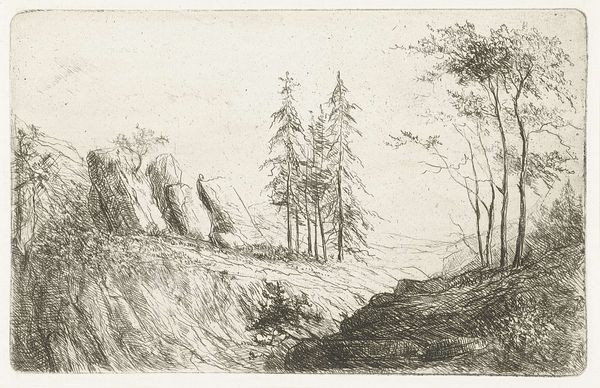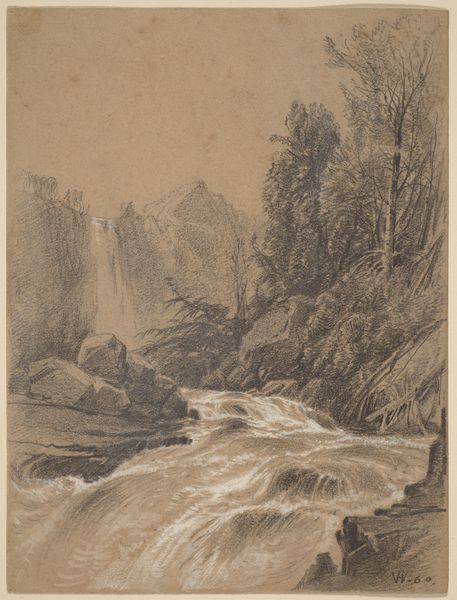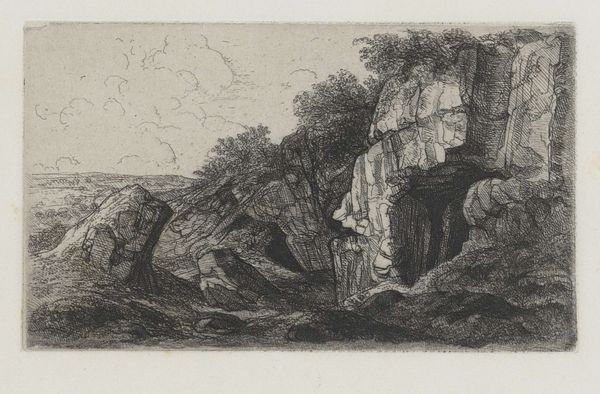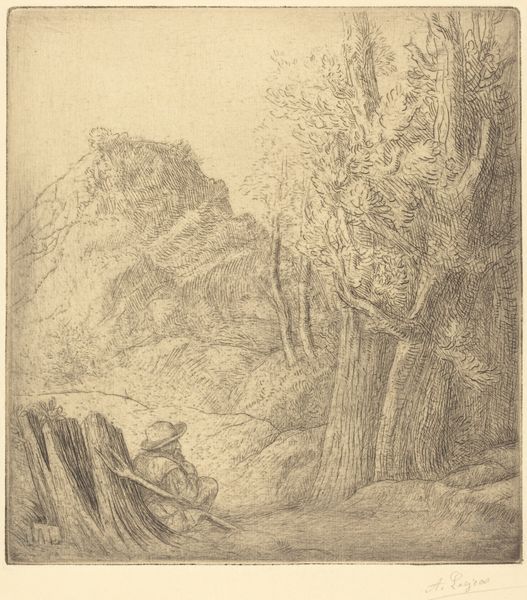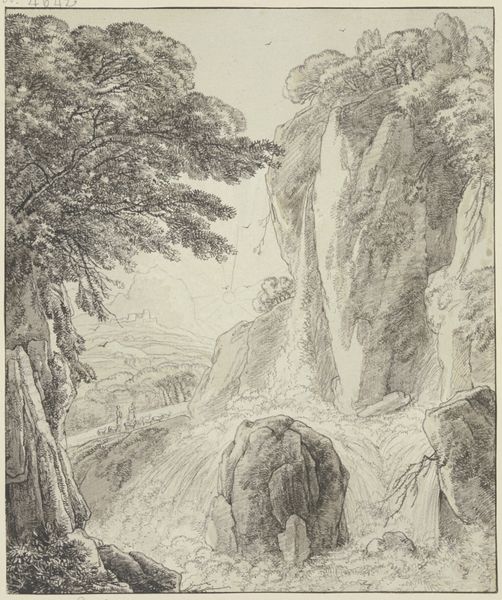
#
pencil drawn
#
amateur sketch
#
light pencil work
#
pen sketch
#
pencil sketch
#
pencil drawing
#
pen-ink sketch
#
mountain
#
sketchbook drawing
#
pencil work
#
fantasy sketch
Dimensions: height 202 mm, width 155 mm
Copyright: Rijks Museum: Open Domain
Curator: Looking at Willem Matthias Jan van Dielen’s "Berglandschap met beek en naaldbomen," likely created sometime between 1815 and 1867, I’m immediately struck by the dense, almost claustrophobic feeling it evokes. What are your initial impressions? Editor: The initial sensation is of a secret place. The pencil lines feel both delicate and robust, as though I'm viewing a timeless scene filtered through memory. There’s an intimate connection with nature suggested here. The way the trees pierce the sky feels familiar in some primal way. Curator: Indeed, there is that almost immediate impression, but let's contextualize this. Consider the Romantic era it potentially emerged from. There’s a tension here between the sublime grandeur of nature, captured in those towering mountains, and its exploitation via early industrial development – a societal context that invariably affected the landscapes people saw and created. What kind of psychological burden did that pose, and how might an image like this subtly protest the status quo? Editor: I’m more inclined to see these looming shapes, those dark, rocky surfaces and towering trees, as part of the enduring human fascination with wilderness and mystery. Note, if you will, that throughout cultures and over millennia mountains have been sacred places, havens, and sources of spiritual renewal, so, as a symbol the mountain, both historically and now, transcends the historical situation. This is particularly reinforced by the small size of the people we may imagine encountering it. Curator: An interesting idea! Let us dwell there. The symbolic potential of these "natural" formations—could they speak to ideas about nationalism and identity? About ownership of landscapes that arguably displace native people from the land? Whose view, and which viewer, does it valorize or challenge? Editor: We might see the pencil lines as the universal human urge to mark a place and comprehend our relationship to the environment. What do you feel, looking at it now? Curator: Ultimately, thinking about those larger societal and power structures at work offers one route for interpreting what at first seems a purely naturalistic sketch. It serves as a good reminder to always ask, for whom is this nature presented? Editor: Yes, asking about our relation to the artwork as object but also as an intersection for symbolism both personal and broadly human, seems fitting. Curator: Definitely. Well, I think we've peeled back some interesting layers here today.
Comments
No comments
Be the first to comment and join the conversation on the ultimate creative platform.
